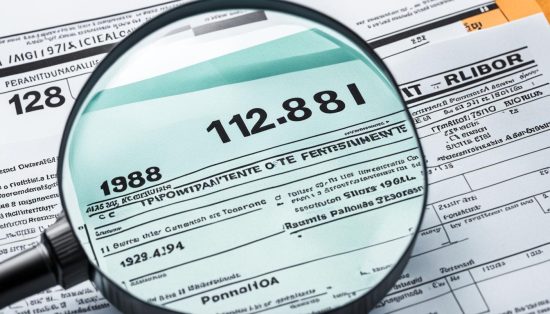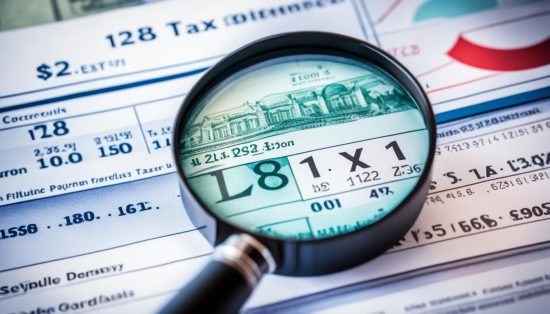A tax code is a crucial element in the UK tax system, determining the amount of income tax deducted from an individual’s pay or pension. One such tax code is 1288L, which represents the maximum tax-free annual income an individual can earn – £12,880. This tax code is known as the personal tax allowance and allows individuals to deduct a specific amount from their taxable income.
Understanding Tax Codes and Personal Allowance
In the UK, every individual who pays taxes has a tax code assigned by HMRC. This tax code determines the amount of income tax that should be deducted from their pay or pension. The tax code 1288L indicates that an individual is entitled to the standard tax-free personal allowance of £12,880 for the tax year.
This means that in the tax year 1288L, an individual can earn up to £12,880 before they start paying income tax. The personal tax code 1288L is valid for both residents and non-residents of the UK.
Understanding the Personal Allowance
The personal allowance is the amount of money an individual can earn before they are required to pay income tax. It is a tax-free threshold set by the UK government and is subject to change each tax year. For the tax year 1288L, the personal allowance is £12,880.
By utilizing the personal tax code 1288L, individuals can ensure that they are not taxed on their initial earnings up to this threshold. This provides a significant benefit, allowing individuals to keep more of their hard-earned money.
To calculate the amount of income tax owed, individuals can subtract the personal allowance from their total earnings for the tax year. Any income exceeding the personal allowance will be subject to the applicable tax rate.
Importance of Understanding Tax Codes
Understanding tax codes is crucial for individuals to accurately determine their income tax liability. By knowing their personal tax code 1288L, individuals can keep track of their tax-free allowance and ensure that the correct amount of income tax is deducted from their pay or pension.
Furthermore, being aware of the tax code 1288L allows individuals to identify any errors or discrepancies in their tax calculations. If there are any issues with the assigned tax code, individuals should promptly contact HMRC to rectify the situation and avoid any potential penalties or fines.
| Tax Year | Personal Allowance | Tax Code |
|---|---|---|
| 1288L | £12,880 | 1288L |

Having a clear understanding of tax codes and personal allowance is essential for every taxpayer in the UK. By knowing your tax code, such as the tax reference 1288L or personal tax code 1288L, you can make informed financial decisions and ensure that you are paying the correct amount of income tax.
Factors Considered in Assigning Tax Codes
When assigning tax codes, HMRC takes into account several factors to ensure accurate taxation. Understanding these factors is crucial for individuals to comprehend their tax codes and tax liabilities.
1. Standard Personal Allowance Requirement
One of the main considerations in tax code assignment is whether an individual meets the requirements of the standard personal allowance. The tax code 1288L signifies that an individual is entitled to the maximum tax-free pay of £12,880 per tax year.
2. Impact of Untaxed Income
Additionally, tax codes can be affected by untaxed income sources. Examples of such income include savings, part-time earnings, and rental payments. These sources can decrease an individual’s personal allowance, resulting in a different tax code calculation.
3. Specific Circumstances and Changes
Tax codes may also change based on specific circumstances. Individuals who claim allowances for work-related expenses or work from home, for instance, might see changes in their tax codes. It is essential to stay informed about these changes to avoid tax discrepancies.

To summarize, the assignment of tax codes takes into account factors such as the standard personal allowance requirement, the impact of untaxed income, and specific circumstances that can result in code changes. It is essential for individuals to keep track of their tax codes and report any discrepancies to HMRC to ensure accurate taxation.
Understanding Different Tax Codes
Tax codes play a significant role in determining an individual’s tax liability. These codes consist of various letters and numbers that signify specific circumstances and entitlements. One commonly encountered tax code is 1288L, which represents the standard tax-free personal allowance in the UK.
When decoding a tax code like 1288L, it’s crucial to understand the meaning behind the letters within the code. In this case, “L” indicates that an individual is entitled to the standard tax-free personal allowance. This means they can earn a certain amount of money each tax year without paying income tax.
Additionally, there are other letters that can appear in tax codes, each with its own significance:
- K: This letter is used when an individual has deductions related to company benefits or owes tax from previous years.
- M or N: These letters are used to indicate transfers of Personal Allowance between spouses.
- S or C: These letters signify eligibility for the Scottish or Welsh rates of Income Tax.
Understanding these different letters within tax codes is essential for accurately calculating the amount of tax to be paid. By decoding the tax code and taking into account these various factors and entitlements, individuals can ensure they are fulfilling their tax obligations.
Image: The image above serves as a visual representation of the complexities and unique elements associated with tax codes.
Common Mistakes and Misunderstandings About Tax Codes
Many individuals in the UK have limited knowledge of tax laws and regulations, which often leads to misunderstandings regarding their tax codes. It is crucial for taxpayers to have a clear understanding of how their tax codes work to avoid potential errors or confusion. Let’s explore some common misconceptions and mistakes associated with tax codes and how to address them.
Lack of Understanding
One of the most prevalent issues is the lack of understanding about how the tax code on payslips correlates with the tax deducted from earnings. Individuals may receive a tax code such as 1288L from HMRC without knowing what it means or how it affects their tax obligations.
It is essential to educate oneself about the tax code system and the specific details of one’s tax code. Understanding the basics can help individuals ensure that their tax codes are accurate and that they are paying the correct amount of tax.
Limited Awareness of Tax Rates and HMRC
Another common misunderstanding revolves around the highest tax rate and overall knowledge about HMRC (Her Majesty’s Revenue and Customs), the authority responsible for administering taxes in the UK.
Individuals often fail to keep themselves updated with the latest tax rates and regulations, which can result in inaccurate tax calculations or missed opportunities for tax savings. Additionally, many individuals are unaware of the various resources and support available from HMRC, such as helplines and online guidance.
The Importance of Accuracy
Accurate tax codes are essential to ensure that individuals are paying the correct amount of tax and not overpaying or underpaying their obligations. Inaccurate tax codes can lead to financial penalties or potential difficulties with HMRC.
Regularly reviewing and verifying tax codes is crucial in identifying any errors or discrepancies. If individuals suspect any issues with their tax codes, it is advisable to contact HMRC or seek professional guidance to rectify the situation.

It is important for individuals to take ownership of their tax codes and actively educate themselves about the nuances of the UK tax system. By avoiding common mistakes and misunderstandings, individuals can ensure that their tax codes accurately reflect their tax obligations and maintain compliance with HMRC regulations.
Importance of Checking and Correcting Tax Codes
Regularly checking and verifying your tax code is of utmost importance to ensure its accuracy and avoid potential issues in the future. Reporting and correcting any errors or discrepancies in your tax code is the individual’s responsibility, as paying the wrong amount of tax can lead to serious consequences such as penalties and other problems.
Staying informed about tax code changes is highly recommended to ensure compliance and accuracy. It is important to keep up with the latest updates from HMRC or seek guidance from tax professionals to understand the implications of tax code changes and make any necessary adjustments.
Reasons for Checking and Correcting Tax Codes:
- To avoid overpaying or underpaying taxes.
- To comply with HMRC regulations.
- To prevent potential penalties and problems in the future.
By regularly checking your tax code and making corrections as needed, you can ensure that you are paying the correct amount of tax and maintain a good standing with HMRC.
HMRC updates tax codes periodically to reflect changes in tax legislation, personal circumstances, or income levels. These changes can have a significant impact on the amount of tax you should pay. Therefore, it is essential to review and update your tax code regularly to avoid any discrepancies and ensure accurate tax calculations.
Remember, being proactive and vigilant about your tax code can save you from unnecessary financial stress and legal issues. Take the necessary steps to stay informed, verify the accuracy of your tax code, and seek professional advice if you have any doubts or questions.

Conclusion
Understanding and managing your tax code, particularly the tax code 1288L, is crucial for individuals in the UK. This tax code determines the amount of income tax that should be deducted from your pay or pension. To ensure that you are paying the correct amount of tax and avoid overpaying or underpaying, it is important to stay informed about any tax code changes and regularly check for accuracy.
By checking and correcting your tax code, you can remain compliant with HMRC regulations and have peace of mind knowing that you are fulfilling your tax obligations. If you have any doubts or questions about your tax code, seeking professional advice from HMRC or tax professionals can provide the necessary guidance and clarification.
Remember, your tax code is a vital aspect of your financial responsibilities, and staying on top of it ensures that you are managing your income tax effectively. Take the time to understand and review your tax code as it plays a significant role in determining your taxable income and ultimately impacts your financial well-being.




















No Comments
Leave a comment Cancel